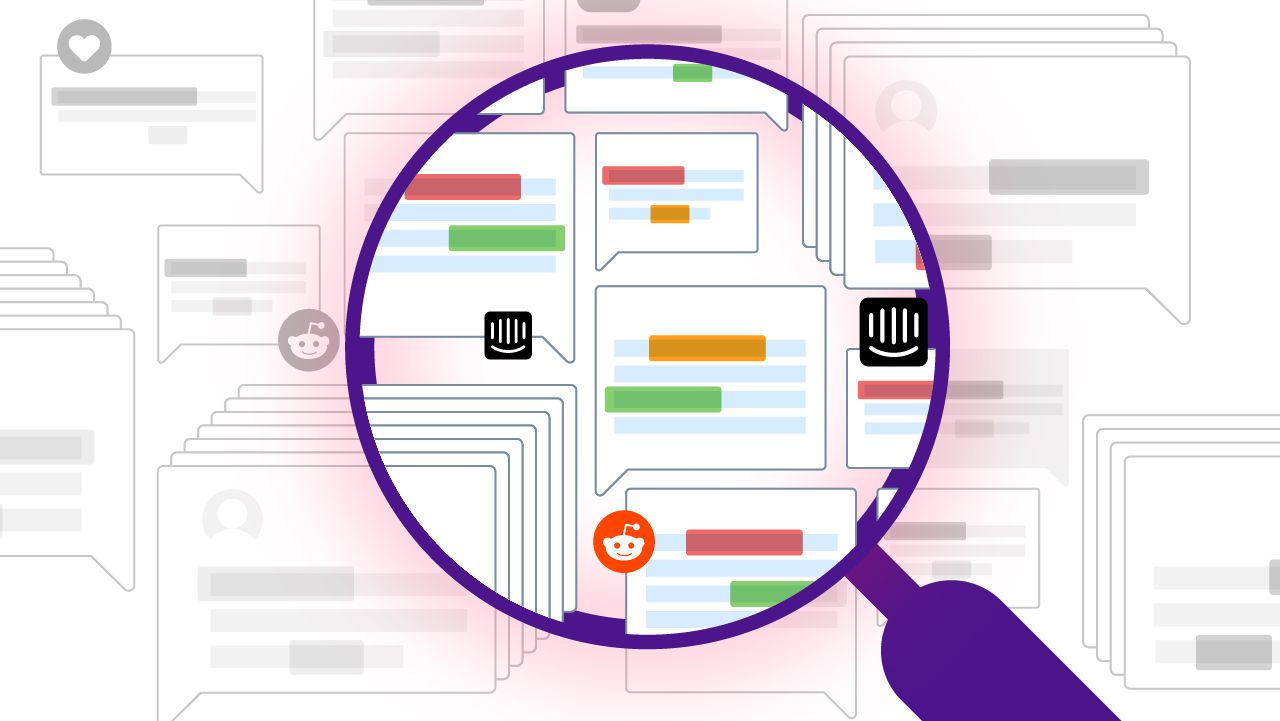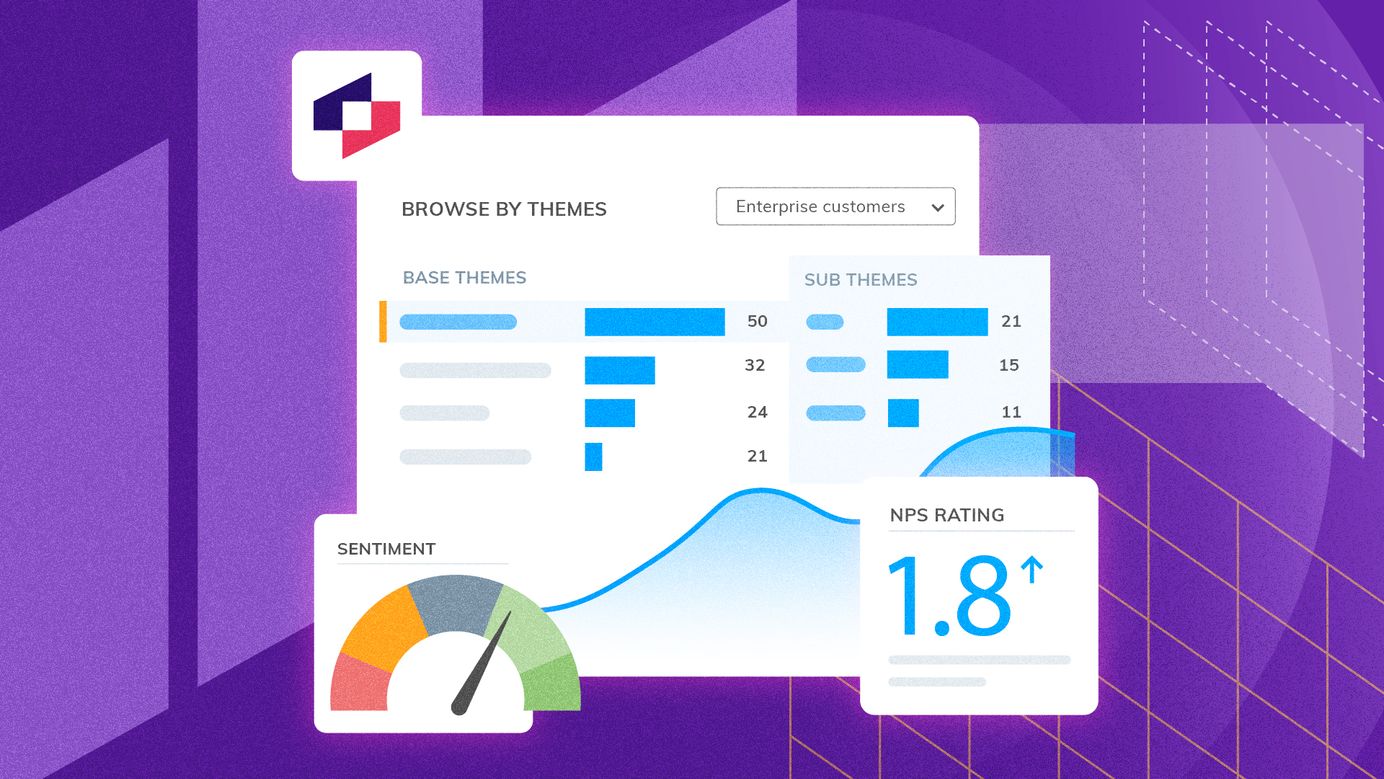
The ultimate guide to NPS: how the Net Promoter Score helps you [+case studies]
NPS - or Net Promoter Score - measures how likely a customer is to recommend your products to others. Here’s what you need to know about this key to company growth.
The best way to acquire new customers is through recommendations. But how can you check your company's ability to win recommendations? Is there a way to turn the tide of customer opinion to ‘favorable’ and ‘definitely recommend’?
The Net Promoter Score, also known as NPS or Net Promoter System, measures how likely a customer is to recommend your products to others. As well as baseline metrics, NPS offers a way to compare your customers’ brand loyalty to that of your competitor’s customers.
But NPS is not just another statistic. In fact, many executives have found it an effective guideline for running a business. Let’s look at how net promoter score (NPS) can improve your strategy and how brands like Symantec, Slack, Optus, and Allianz have used it to their advantage.
What is a Net Promoter Score?
Your Net Promoter Score is a number that tells you just how likely your customers are to recommend you to someone else. It was created in 2003 by Fred Reichheld, a Bain Fellow and founder of Bain & Company’s Loyalty Practice, after an extensive research project.
Reichheld wanted to find out what method would give him the best results when measuring a consumer’s brand loyalty. After two years of research, he and his team came up with one question that worked consistently best for most industries:
“What is the likelihood that you would recommend Company X [or Product X] to a friend or colleague?”
This simple question has a rating scale of 0 to 10 for respondents to answer. 10 is extremely likely to recommend, 0 not at all likely, and all other numbers on the scale are somewhere between these two extremes.
The three categories of customers in the NPS System
The Net Promoter Score survey is easy for your customers to complete, and the resulting data is easy to collect and consolidate. It gives you a quick, reliable look at general customer satisfaction levels.
Based on the results of the NPS survey, customers are classified into three categories: promoters, passives, and detractors. Here’s a rundown of each of them.
Promoters
Respondents who give a 9 or 10 score are considered promoters. They love the products or services that the company offers. They are typical repeat buyers who recommend the company’s products or services to others.
Passives
Passives are respondents who give a 7 or 8 score. They are somewhat satisfied with the products or services of the company. However, they could easily switch to a competitor that has a better offer. They probably won’t spread anything negative about the company and its offerings but they are also not enthusiastic enough to promote the company’s products or services.
Detractors
Detractors are respondents who give a 0 to 6 score. They are not happy with the company and its products or services. Unhappy customers probably won’t purchase again from the company, and they are very likely to tell others about their negative experience. Detractors could potentially damage the reputation of the company.
How do you calculate your NPS?
NPS is calculated by subtracting the percentage of detractors from the percentage of promoters.
It can range from -100 (if all customers are detractors) to 100 (if all customers are promoters). 50/50? Your score is a neat zero.

Interestingly enough, the Bain team found that NPS leaders on average grew at more than double the rate of their competitors. This was the case even though compiled scores came from leading companies that varied widely by industry.
When you have a positive net promoter score, your company has earned more promoters than detractors. But how should you interpret your NPS? More importantly, how will you set goals for further improvement?
To get the most from your NPS results, you’ll want to perform an effective Net Promoter Score Analysis. But first, you need to know what type of Net Promoter Score you have.
The three types of Net Promoter Scores
According to Bain and Company, there are three types of Net Promoter Scores.
How you classify your scores depends on where in the customer journey your NPS feedback is collected.
1. Competitive Benchmark
When a company seeks feedback from both their own customers and the customers of their competitors, they get a competitive benchmark. This score provides an objective method for comparing your own feedback to that of your competitors’. You can easily prioritize and set goals for your company based on data gathered.
2. Customer relationship
A customer relationship NPS score is one you get by staying in regular contact with a sample of your own customers. Using NPS surveys, you ask them how likely they would recommend your product or service and why. The feedback gathered reflects customer perception and will help you assess your relationship with customers. It can also be helpful in making decisions on how to improve products/services, marketing, servicing, pricing, etc.
3. Experience
This involves asking for feedback from your customers after selected experiences or transactions. For example, requesting feedback after the purchase of a product or service. This feedback will help the company understand how a particular experience influenced the customer’s overall loyalty. This can help the company improve customer experience further.

A company learns what customers are thinking about their relationship with all businesses they interact with when they have a competitive benchmark NPS. This score is not limited to customers’ interaction with one company. This score shows a company how well it is doing compared to all its competitors in the industry.
Experience and customer relationships, on the other hand, focus on just one company and can be crucial to that company’s continuous improvement.
What are the benefits of NPS?
In the two decades since Reichheld first introduced the net promoter scale, it’s become the go-to option for measuring customer loyalty across the board. There are five main reasons for this.
1. It is a simplified survey
Customers hate long surveys with complicated, hard to answer questions. The NPS survey usually requires just two questions: one is an open-ended question and the other is a Likert-type scale. The question regarding the customer’s likelihood to recommend the product or service is scored using a simple 0 to 10 scale. The Net Promoter Score can be broken down by store, by product, or by individual customer service representative.
2. It is easy to use
NPS surveys can be done through different channels – by phone, by chat or through email. NPS scores are gathered and posted quickly, and the open-ended questions offer a near real-time feed of customer journey snapshots. Recent customer comments can be easily shared with company managers and employees.
3. It enables quick follow-up with customers
Customer feedback can be shared quickly. When a company receives unfavorable feedback from customers, automated notification systems can instruct managers and employees to contact detractors. They're able to identify unhappy customers' concerns and resolve problems whenever possible.
4. More companies are using NPS
The number of companies using NPS has steadily increased since 2003. NPS practitioners have developed successful customer journey improvement systems based on Net Promoter principles. Many practitioners also participate in the NPS Loyalty Forum where they share their experiences and help others improve their businesses. This community can be invaluable for anyone new to the game.
5. It is adaptable
NPS does not require high-priced third-party vendors to make it work. It is an open-source method that can be used in a wide range of business settings. NPS can measure customer loyalty after launching a new product, after servicing calls, or after a company merger. It can keep your customer support team informed, help your product team plan out new products and services, and help you convert your current users into enthusiastic brand ambassadors.
What are the limits of NPS?
Some business leaders are skeptical about the effectivity of NPS. They suggest it is an overly simplified approach to a very complex problem, and that lower scores may not mean much in the long run.
If you work in an industry where word of mouth recommendations do not matter much, your NPS score may tell little about your prospects. Still, it should provide a good idea of what different customer segments think about your products and services.
If customers get survey fatigue from repeatedly seeing the same NPS survey, the response rate may go down. Consider the design of your survey and change it up if necessary.
A NPS survey is not an absolute method of measuring customer loyalty, and can never provide a complete picture of the customer journey. But it will offer direction, so you can follow up with specific customers and dig further into issues with a product or service.
How can NPS data help businesses?
You may be facing opposition to adopting NPS at your company. Skeptics will want proof that it's effective.
Business which have tried it have an unanimous answer: Yes, NPS works. Here are some case studies and success stories that demonstrate how it works in real life:
1. How NPS surveys reduce costs
Symantec provides software for protecting technology infrastructure, data, and communications. The software addresses security risks as well as risks to compliance, performance, and availability. It operates in over 40 countries, with more than 50 million customers and more than $4 billion in revenue.
Before adopting NPS, each department had its own metrics. They did what they could to improve the customer experience, but noticed that the metrics were not helping to improve customer loyalty. Symantec adopted NPS scoring in 2004, deploying in the Consumer Business Unit (CBU). This unit is responsible for developing and marketing its Norton products which represent more than 30% of the company’s revenue.
After introducing NPS surveys, the CBU achieved more than 50% increase in NPS scores for its Norton Internet Security and Antivirus product lines. Other results they saw:
- A 13-point improvement in satisfaction scores for Support.
- 10 to 12% reduction in call times.
- A 30% reduction in support costs which was reinvested in the customer experience.
- A significant increase in the number of positive reviews and awards around the world.
To this day, NPS is deeply integrated into Symantec’s business. The organization continues its commitment to creating a customer-centric culture.
2. How NPS enhanced interactions with existing and prospective customers
Many of us have used Slack, self-billed as “a messaging app for teams.” The purpose of the app is to bring together all of a team’s communications in one place.
According to Slack CMO Bill Macaitis, as the number of advocates for your product increases, customer acquisition costs for the company decreases. Consequently, your customer success team will be more effective. All CEOs should be able to answer the question, “What are the top 3 reasons why people recommend and do not recommend your brand?”
Macaitis uses a NPS-based survey question to refine all interactions that existing and prospective customers have with Slack. Prospects signing up for Slack, or becoming paying customers, is not enough. The important thing is whether or not these customers will recommend the company’s product.
As a result of NPS integration and word-of-mouth promotion, Slack gained a $1 billion valuation in just one year. Macaitis calls NPS a “leading indicator of future growth.”
3. How NPS helps reduce churn
Optus is a major telecommunications company in Australia. During the last quarter of 2013, the company posted a net profit of $227 million. This meant a 41% increase against the last quarter of 2012. The number of customers on its 4G network increased more than 30% to 1.8 million.
According to Kevin Russell, Optus’ country chief officer at the time, when they adopted NPS, there was a six-point increase in its NPS over the December 2013 quarter. There was also a 50% decrease in the number of complaints to the industry ombudsman.
The company reports that improved customer experience is reflected “in a reduction in mobile postpaid retail churn to 1.4 percent.”
4. How NPS instigates organic growth
Allianz is an international financial services provider based in Germany.
When Allianz adopted NPS, there was a high customer acceptance of the survey. 91% participated in the NPS survey and 85% accepted a feedback call from an Allianz employee.
The company implemented a bottom-up NPS complemented by service recovery. The goal of Allianz was to turn detractors into promoters.
Allianz found that operating units with a high NPS had a higher overall CAGR (compound annual growth rate) compared to units with lower overall NPS scores:

Conclusion
NPS has been proven to be an effective way of measuring customer satisfaction. It is simple and easy to use.
But gathering data is just the first part of the process. These companies have become successful in NPS implementation because of how they have used data to improve their products and services. They have also used NPS data to develop marketing methods focused on improving customer experience.
Want to match Slack’s viral growth?
If you’d like to jumpstart your own business growth, you need to start using NPS surveys now. It’s not hard to get started– let us show you how to do it!
Stay up to date with the latest
Join the newsletter to receive the latest updates in your inbox.




